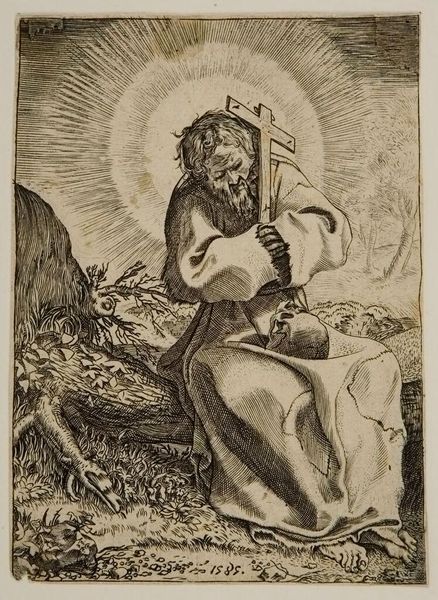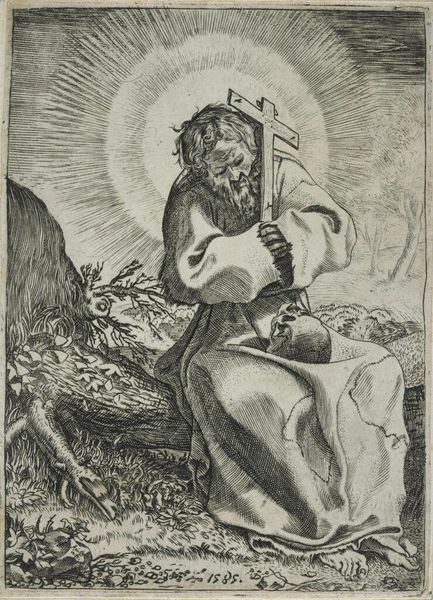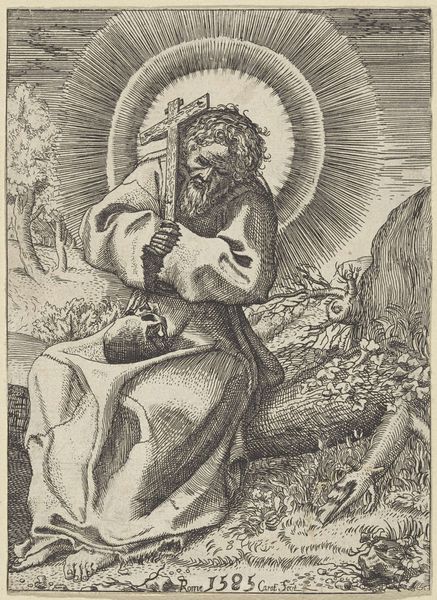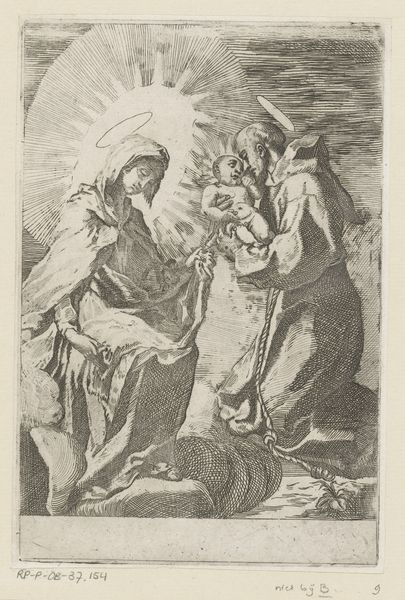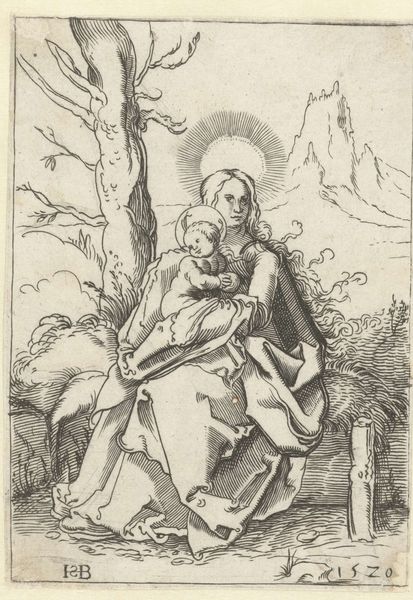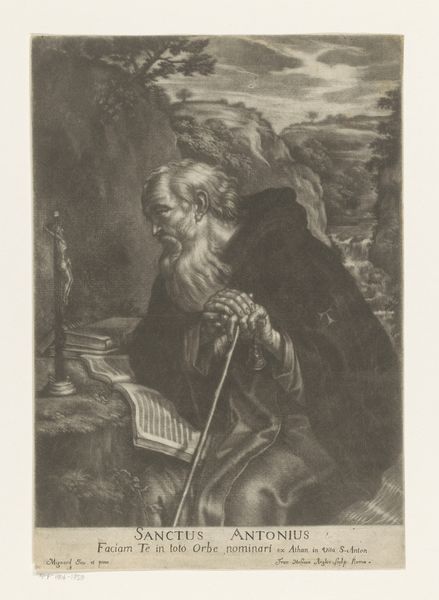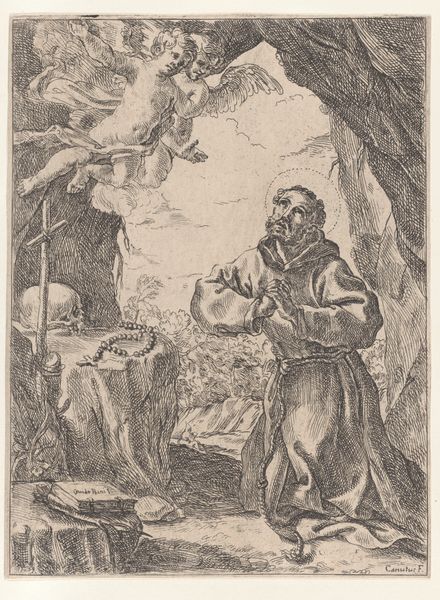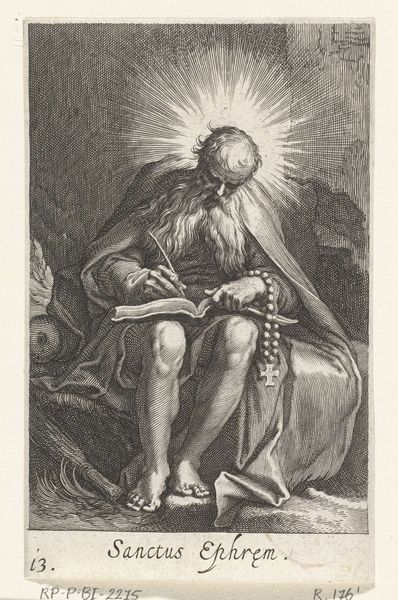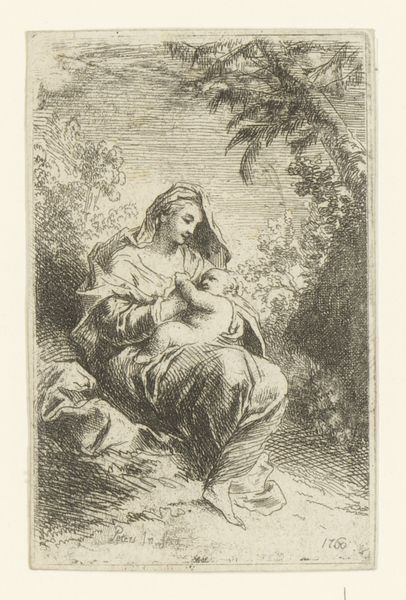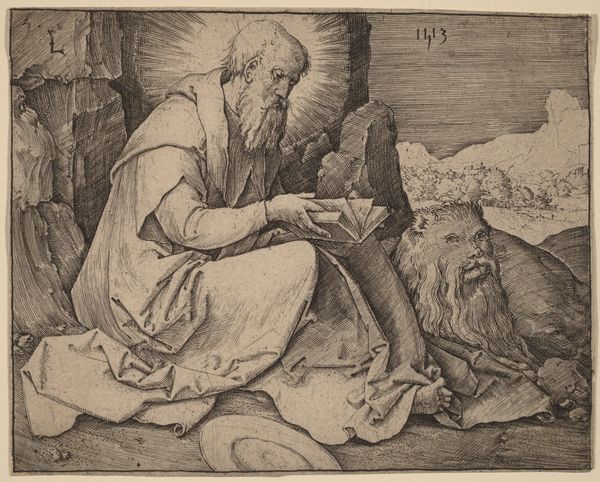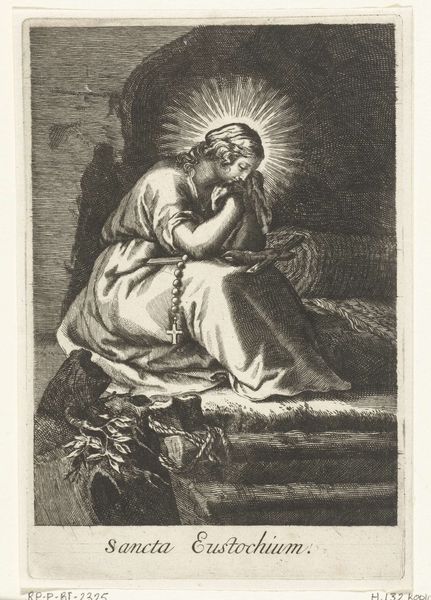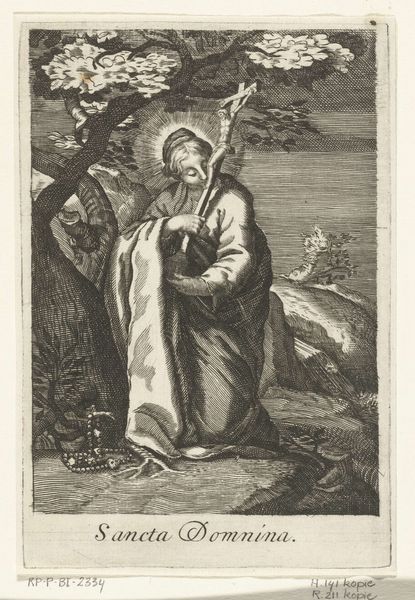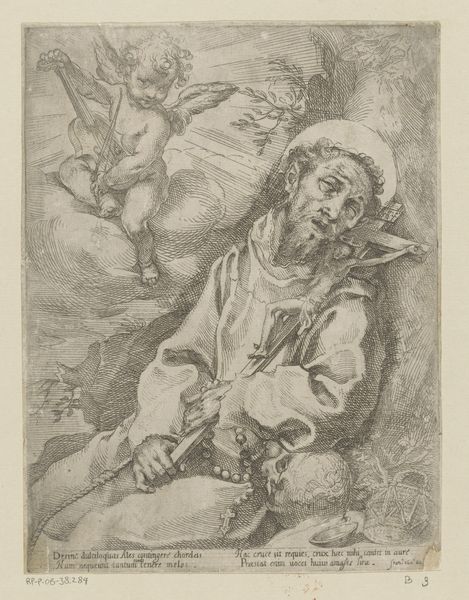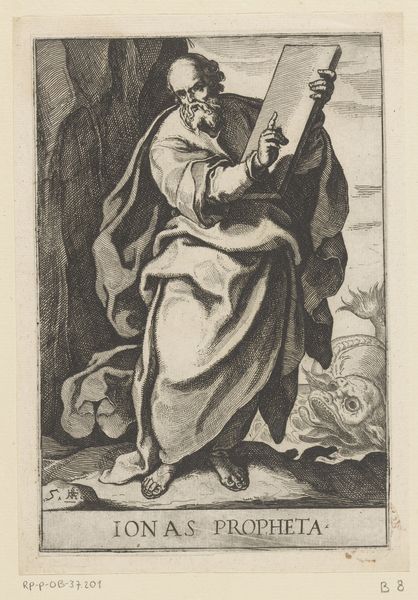
Copyright: National Gallery of Art: CC0 1.0
Editor: Here we have Annibale Carracci's "Saint Francis of Assisi," an etching from 1585. The cross-hatching is so intricate; it gives the whole piece a really somber, contemplative feel. What strikes you most when you look at this? Curator: Oh, that light! That divine radiance bathing St. Francis—it’s pure Carracci magic, isn't it? I imagine him wrestling with faith amidst all that earthly texture; the gnarled tree roots, that weighty skull... a dialogue between heaven and heavy reality. The skull practically whispers "memento mori," remember you must die, juxtaposed against Francis’s spiritual longing. Tell me, do you sense the artist pushing us to feel that internal push and pull? Editor: Definitely! The skull is impossible to miss. It’s like Francis is caught between earthly decay and spiritual hope, holding tight to that cross. How does this fit into the Baroque style? Curator: Ah, the Baroque! Think drama, heightened emotion, almost operatic. See how Carracci manipulates light and shadow to amp up the intensity? And the way the composition guides your eye right to Francis’s face, all those worried lines etched so clearly. It’s about capturing a moment of intense personal experience and throwing it into high relief for the viewer. I'm almost smelling damp earth and incense! What does it conjure for you? Editor: That makes a lot of sense. Now that you mention it, I really feel the emotional intensity! I hadn’t really connected it to the Baroque emphasis on drama before. Curator: It’s all there in the details. Art history is really just detective work in disguise! It reminds me, sometimes the most rewarding art encounters are ones where you go in knowing nothing. The art reveals itself when you meet it halfway. Editor: I totally agree. I’ll definitely remember that – thanks for opening my eyes to so much.
Comments
No comments
Be the first to comment and join the conversation on the ultimate creative platform.
